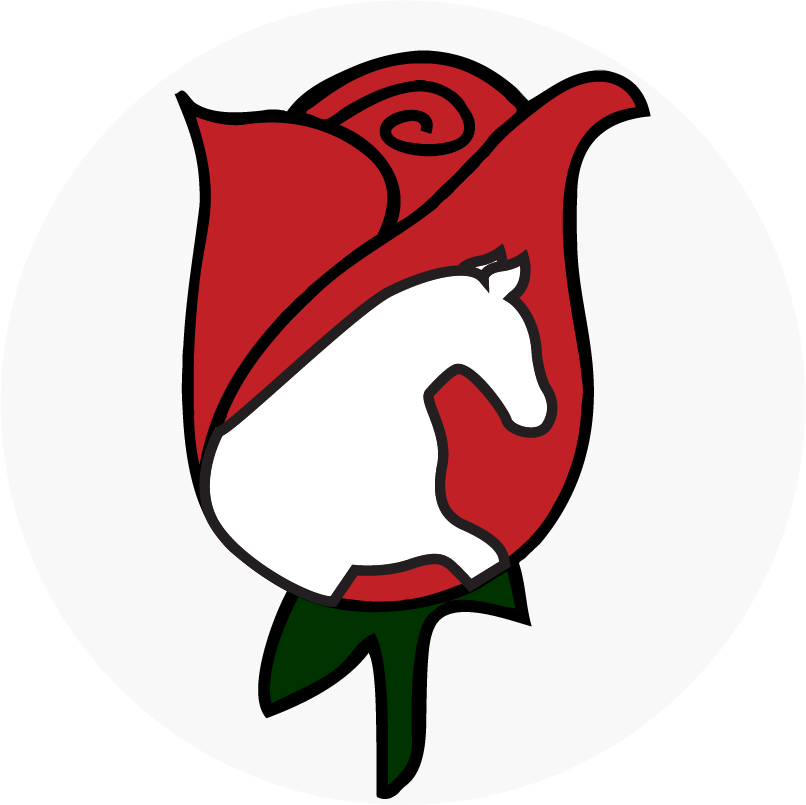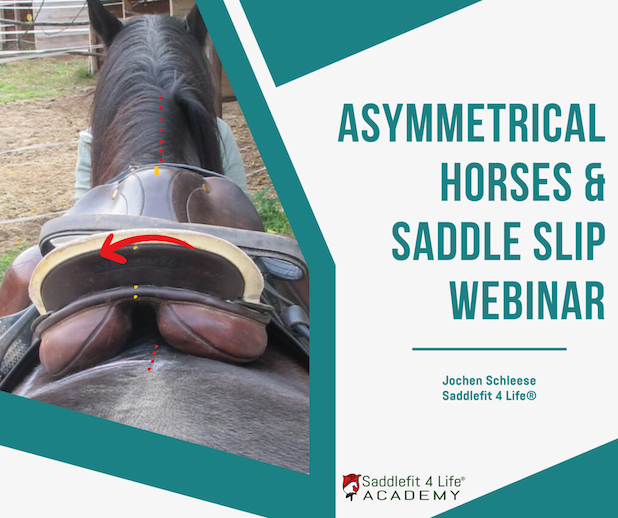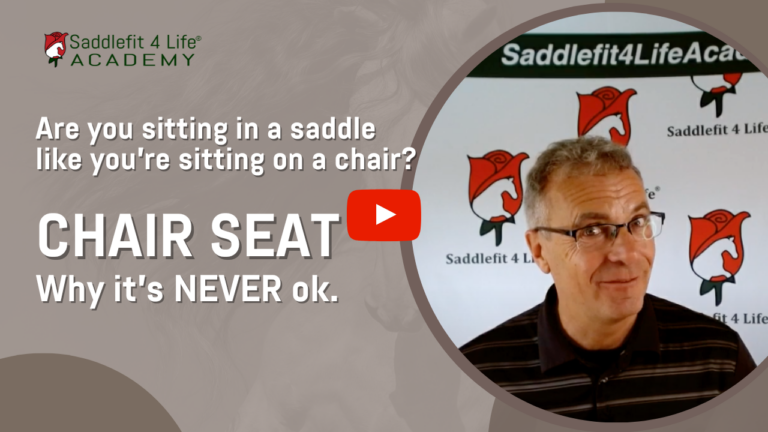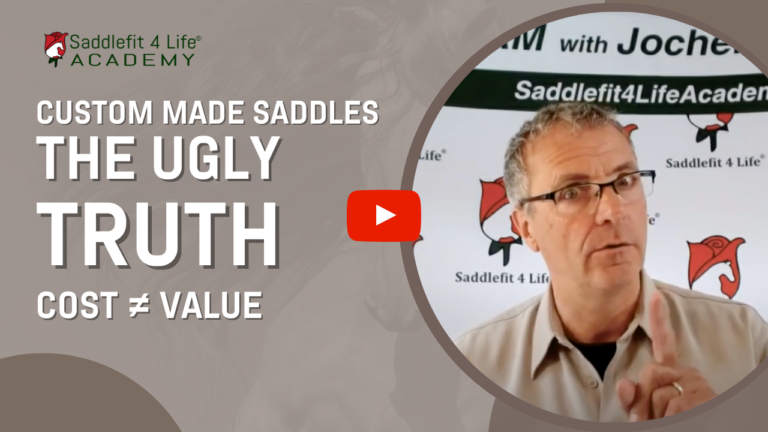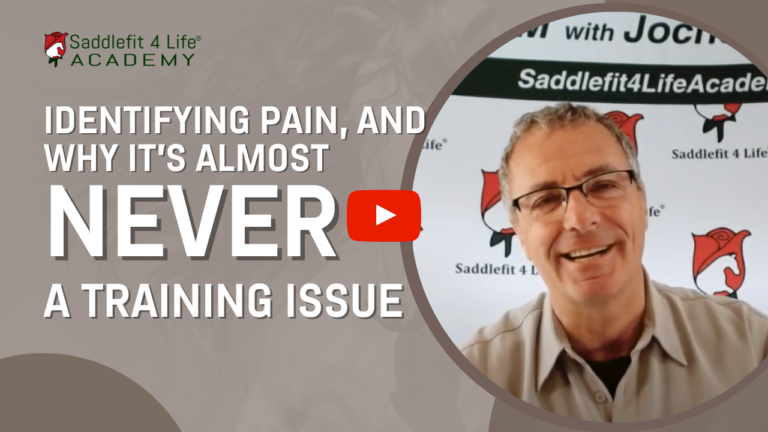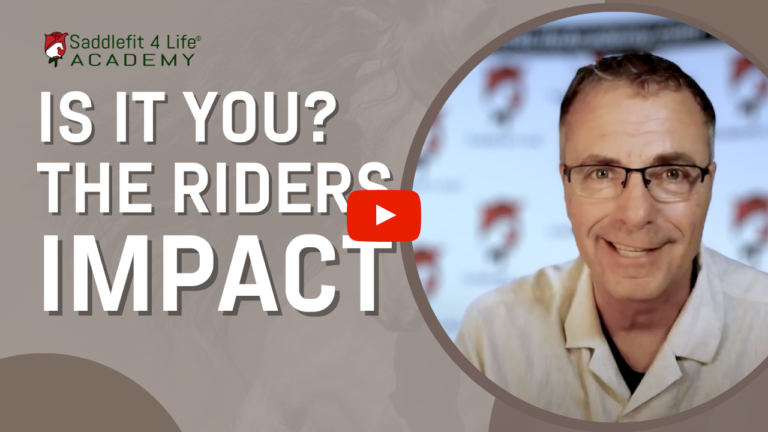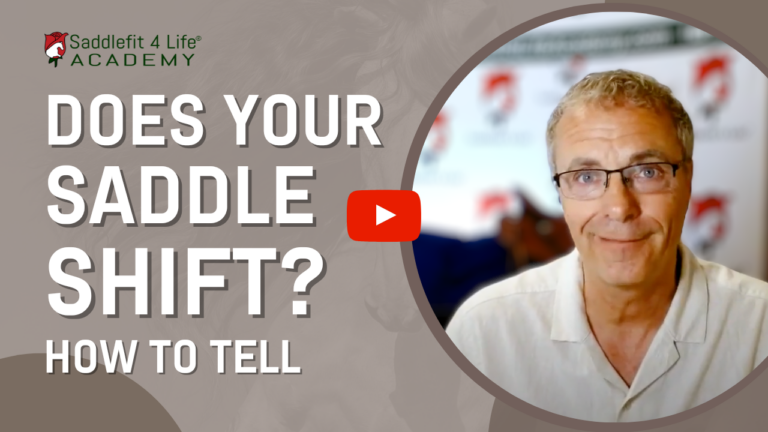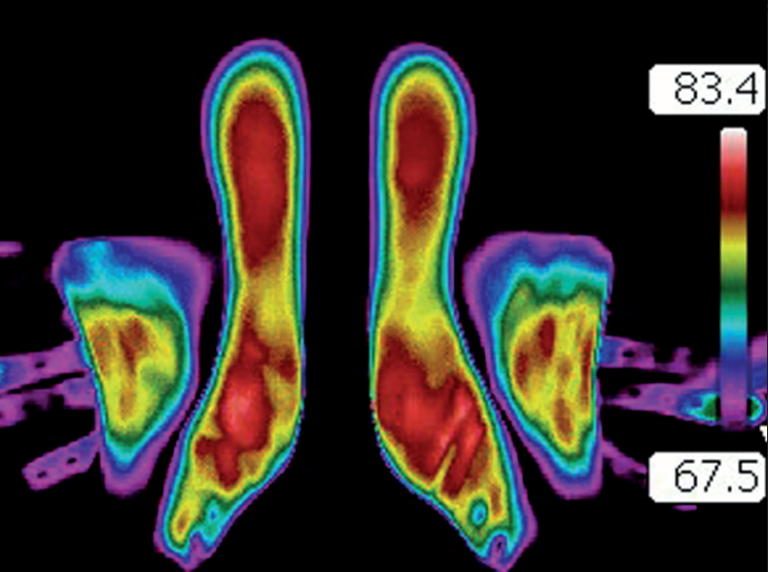Saddle slip may seem insignificant, but it can have huge impacts on both the horse and the rider.
Straightness.
Twisting.
Falling.
When we look at a saddle during a static assessment (which is just one of the many different ways we assess saddle fit during an evaluation) we look at how the saddle sits on the horse, specifically from the back.
Before even placing the saddle on the horse, we flip it over to evaluate the panels and gullet channel, as well as looking for any twisting of the tree that may make it look like it’s falling to the side when placed on the horse.
With the saddle flipped upside down, how do the panels look? Are they even?
When you run your hand over either, do you feel lumps or divots?
When you look through the gullet channel, does it become narrower?
Are the panels the same height?
When looking at the saddle from behind, does the center point of the cantle line up with the center point of the pommel?
Is the tree twisted?
After a thorough inspection with all issues being recorded, the saddle is then placed on the horse. Ideally, you would have a relatively straight and even saddle to begin with, which is what we will use for this example (a saddle without any obvious issues such as panel evenness or twisted tree).
With the horse standing square, on even ground with the head held straight and even weight on all 4 feet, set the saddle down onto the horse and move behind them (use a step stool if needed, and be wary of horses who may kick out). What you’ll be looking at is the center line of the cantle which you can mark with chalk, the gullet channel, and the spine of the horse.
If the rear of the panels fall to either side, you can be sure that during movement, the horse will have issues in certain directions. A saddle whose panels fall to the right at the rear, will have issues going left as the space between the spine and the panel is already less, and any bend to the left will only exacerbate it. Going to the right will be much easier as it will help straighten the rear of the panel and give the spine the necessary clearance. The same applies to a saddle whose panels fall to the left at the rear, the horse will have issues going right and have an easier time going left.
So what causes a saddle to twist, which refers to the front and rear of the saddle being out of alignment and essentially going in different directions, whereas falling refers to front and rear of the saddle going in the same direction.
When the shoulders of the horse are asymmetrical, which is quite often, it will cause the saddle to move to the hollow side, which in turn causes one side of the saddle to shift further forward/further back, twisting the rear of the saddle to one side.
If you don’t take into consideration the asymmetries of the horse, you will only exacerbate that asymmetry and cause additional problems further down the line.
One possible option is shimming, but be warned, MANY people do not shim correctly and end up doing more harm than if they didn’t shim in the first place. Proper shimming also requires shims that can be secured to the saddle, as opposed to a pad where there is risk of them shifting into areas you don’t want them. Also, shimming for asymmetry requires front AND rear shims, not just front. (We discussed this in detail in our last Web Lecture on Saddle Pads & Shimming)
Another option is to purchase a saddle that is capable of orthopedic adjustments (asymmetrical adjustments) without throwing the balance of the entire saddle out of whack by doing so.
Widening or narrowing the tree angle or width is not a viable solution for this problem as you’re affecting both sides of the saddle and overall fit and balance. You risk crushing the withers or having the saddle rock side to side.
Here’s the bottom line: An ill-fitting saddle can cause unnecessary stress and pain for your horse, leading to behavior issues, poor performance, or even long-term damage. On the other hand, a well-fitted saddle allows your horse to move freely and comfortably, making riding a more enjoyable experience for both you and your horse.

